AARP [website]
Spreading the Joy of Double Dutch
Book author creates masters’ team of jump ropers
by Sharon McDonnell, AARP, October 22, 2021
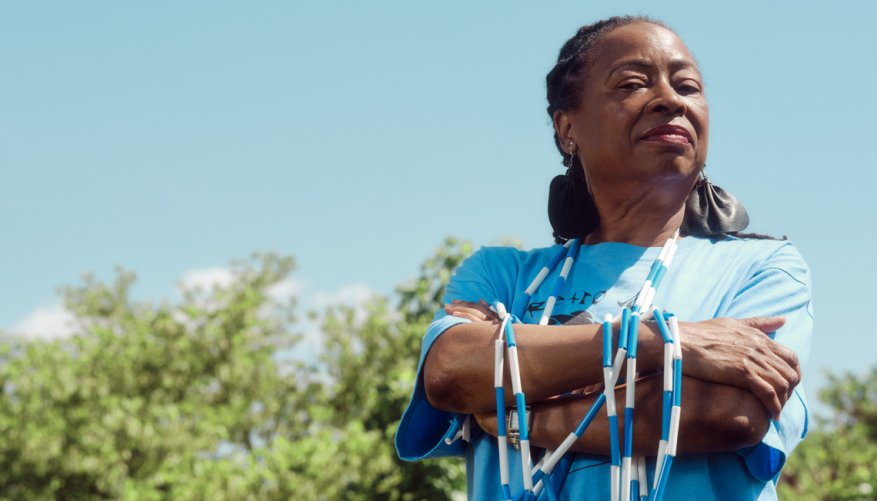
Joy Jones – Courtesy Jared Soares
Joy Jones learned to jump double Dutch as a child. As an adult, the 66-year-old semiretired public library associate took out her jump ropes again and founded a double Dutch performance group.
Jones, the author of five books, including one about double Dutch called Jayla Jumps In, spoke with AARP and described what her childhood hobby has brought to her life.
Joy Jones: It looks tricky, but double Dutch is easy to learn, even if you’re older. Jumping two ropes that are swinging in opposite directions is more rhythmic than single rope jumping. And you rarely fall down, because your feet stay pretty close to the ground. You can pick up the basics in under 10 minutes — you just have to be willing to look foolish and have fun.
I learned how to double Dutch as a child — it’s seen primarily among Black girls in cities in the Northeast. Then I grew up and put my jump ropes away. But I got back into it about 17 years ago, when I formed the performance group DC Retro Jumpers. The founding members are women over 50, but we’ve got all ages in the group now. Our motto is, ‘Not everyone likes to exercise, but everyone likes to play.’
A lot of times people don’t want to do a formal workout. After all, workout means work. But almost everyone enjoys having fun. And revisiting some of the things we did as children is a whole bunch of fun. And so, I thought it would be easier to get people to pay attention to their health if it’s something that they want to do, not something that they ought to do.

From left: Robbin Ebb, Joy Jones, and Carlyle Prince – Courtesey Jared Soares
A few years ago, a reporter saw my group performing at a street festival and wrote about us. The next thing I knew, we were on a plane to Russia to tour, as part of a cultural exchange sponsored by the U.S. embassy in Moscow! Our first day, we double Dutched in Moscow’s Red Square. We also performed in St. Petersburg and Belgorod. We were well received everywhere.
Our handlers on the tour were all Russian men, and they were huge fans of hip-hop music. One of them came to see us in the U.S. He even entered a hip-hop dance competition in Baltimore and placed in the semifinals. So I guess you could say that the cultural exchange was a success.
You might look at me and say, ‘Oh, she started a double Dutch team, and the double Dutch team traveled abroad? She must have been a competitive jumper in her youth. She must be a jump rope ninja.’ Not so. I’m just a passable jumper. I do it because it’s a lot of fun to do it. Our secret sauce is we get you to jump. When we do our demonstrations, people are not so much interested in watching us do our thing — they want to get in the rope, too, and so we are very good at helping that person who hasn’t jumped in 100 years, and she wonders, Can I still do it? Yes, you can. Or the person who says, ‘I never learned how to jump double Dutch. Can I learn at this advanced age?’ Yes, you can. Or the little kid who’s always on his or her screen, and they see all the excitement and they put the screen down. They leave the cellphone alone, and they want to get in on the action. Can they do it, too? Absolutely.
So our secret sauce is we’re good at getting other people to join in on the fun.
I’d encourage anyone to return to something they loved as a child, or try a kids’ skill you’ve always wanted to learn. If people think you’re immature, who cares?
A lot of times adults don’t want to look foolish. Sometimes men wonder, Is this just for girls only? Sometimes you think, Oh, I’m so fat, I’m so old. Can I do it? And once you get over those burdens — and they’re not really burdens or obstacles, they’re hiccups — you’ll have no problem.
Double Dutch is exhilarating. That jumping up and down is so simple, yet it kicks in all of that exhilaration. So it makes me feel happy, it makes me feel excited. A lot of times when DC Retro Jumpers comes into a room and we start turning, the room might have been quiet and sedate, but pretty soon it’s popping with activity. We’re purveyors and conveyors of joy, and I like watching that transition from a quiet, sedate environment to one that’s full of excitement and fun.
For me, double Dutch is like a combination of confetti and champagne: It releases a happy feeling and makes everyone around you feel good, too.
Champagne gives you that high feeling, and confetti is what you throw out when you’re excited, when you’re celebrating. And so double Dutch is that sweet spot between the two of those. Champagne without the hangover, and confetti without having to sweep up trash. So it’s pure.
Joy Jones’ Exercise Tips
- To double Dutch, just bounce. Look straight ahead, not at your feet. Don’t worry about being clobbered by the rope.
- Do it to music, if it helps. Music can be motivating. With practice, you can go faster.
- Revive a pastime from your childhood. It needn’t be jumping rope. The important thing when you’re older is to keep moving.
Click here to watch the video: “Double Dutch Group Makes Exercise Fun.” (see near bottom of article)
ABC 7 News – WJLA
@ABC7NEWS on Twitter
ICYMI on @ABC7GMW: @ABC7Robert
July 20, 2020
Robert Burton, Co-anchor of WJLA’s ‘Good Morning Washington’ Slayed the Double Dutch Game Over the Weekend!
Click here to watch the video!
AJ Everyday [website]
May 2020
How Robbin Ebb Double Dutched Her Way to Russia
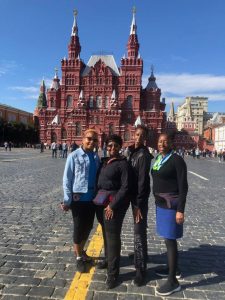 You could say that I literally bunny-hopped my way to Russia. The ‘bunny hop’ is a key part of the Ebb Technique, the method I developed to teach kids and adults how to jump Double Dutch. And it was Double Dutch that led me to becoming a cultural ambassador to Russia.
You could say that I literally bunny-hopped my way to Russia. The ‘bunny hop’ is a key part of the Ebb Technique, the method I developed to teach kids and adults how to jump Double Dutch. And it was Double Dutch that led me to becoming a cultural ambassador to Russia.
I’m a coach for DC Retro Jumpers which started in 2004 as a Double Dutch team for adults. An after-school program contacted us, looking for someone to teach it to children and I said yes and roped in my sister, Carlyle, to help me. Now, I teach at four schools around Washington, DC, and lead demos for community centers, libraries, street festivals, birthday parties – wherever I’m asked! With my Ebb Technique: if you can do a bunny hop, I can get you jumping Double Dutch in 10 minutes! [read more…]
First for Women
Monday, January 20, 2020
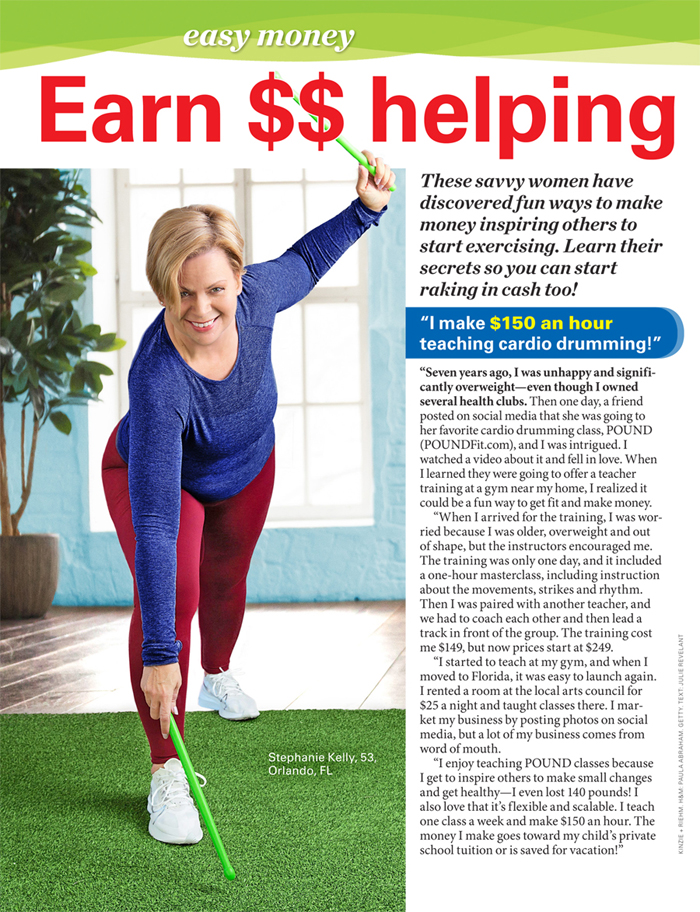
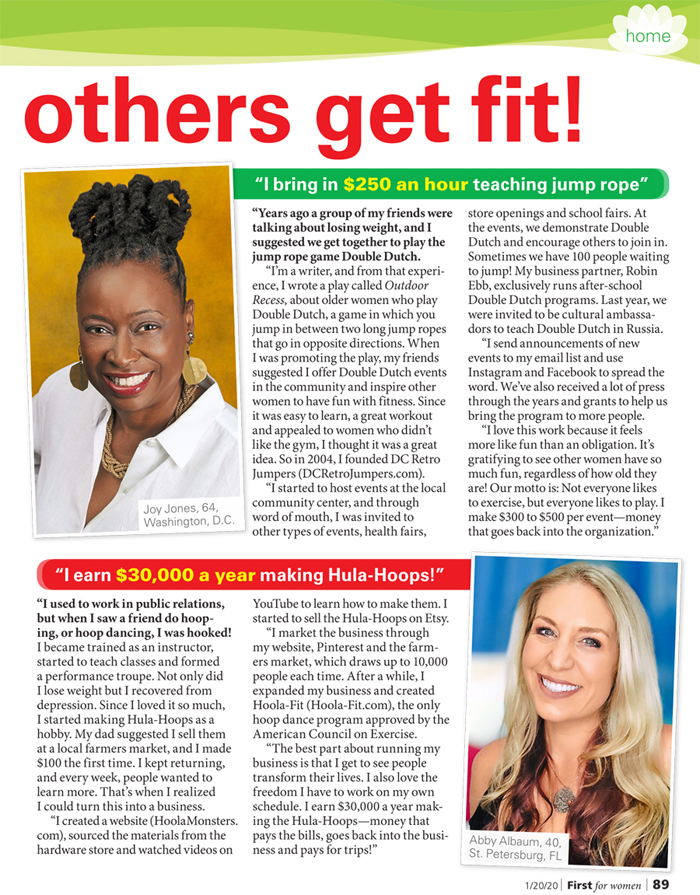
The Washington Post
Wednesday, October 18, 2017
‘Black girl magic’: D.C. Retro Jumpers remind D.C. how to double Dutch
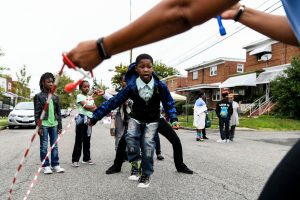
Michael Smyers Jr., 8, plays double Dutch with the D.C. Retro Jumpers during the Open Door Baptist Church community day in Washington.
(Carolyn Van Houten/The Washington Post)
Before smartphones and Snapchat, the click-click of double Dutch jump-ropes could be heard in the streets and alleys of Washington and other urban areas.
While the uninitiated might marvel at its intricacies, it often involves two children, usually African American girls, reciting songs and turning ropes while one (or more) leap between them, jumping as fast as they can for as long as they can. But in the age of the glowing screen, it takes a squad of wise veterans to help kids relearn the game.
“These computers have gotten kids so rotten,” said Robbin Ebb, 52. “It’s a lost art. I’m bringing it back.”
Ebb is the force behind D.C. Retro Jumpers, a group operated by women working to bring double Dutch back to D.C. streets. Ebb said the group was started in 2005 for an event at the Turkey Thicket Recreation Center in Northeast Washington, then a subsequent slew of invitations from schools, churches, block parties and homeless shelters has kept them busy ever since.
The routine is well established. Ebb, usually accompanied by two other members of the group, arrives at an event with ropes and starts jumping. Kids — and parents — gather round, and Ebb begins cajoling them to get into the rope, no matter their shape, size or age.
“Parents got off from doing it,” Ebb said. “I don’t care what color you are. If you can do my bunny hop, I’m getting you in my rope.”
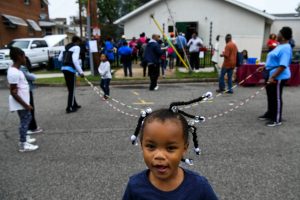
Da’Moni Kelly, 5, jumps up and down while waiting her turn as the D.C. Retro Jumpers teach double Dutch to children during the Open Door Baptist Church community day in Washington.
(Carolyn Van Houten/The Washington Post)
Joy Jones, founder of D.C. Retro Jumpers and author of a play about double Dutch, said she was inspired to create the group to feed an “intra-generational exercise obsession.”
“My vision for the group was to have adult women jump-rope for fitness and fun,” Jones said. “One of the things that really inspires me, still, is seeing women on the edge of a demonstration and see the longing — almost lust — to get in the rope.”
That feeling was on display earlier this month at Open Door Baptist Church’s community day in Southeast. Things started slow, with Ebb and her sister, 63-year-old Carlyle “C.C.” Prince, turning the ropes for each other or another D.C. Retro Jumper volunteer.
Then, the line for the ropes began to grow. The 56-year-old church pastor — a former police officer who once ran a double Dutch program for D.C. police — jumped. A braided little girl who looked to be about 3 years old jumped.
Janience Kelly, 26, and her 9-year-old daughter, Armari, took turns — Armari’s first time.
“I told her: ‘I’m doing it to show you you can do it,’ ” Janience said.
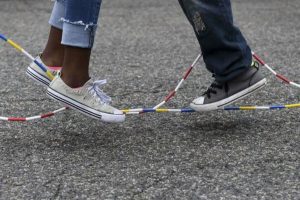
The D.C. Retro Jumpers help Beatrice Barnes, 10, left, and Janiya Barnes, 12, play double Dutch. |
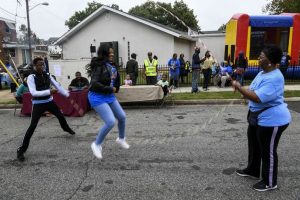
Robbin Ebb, left, and Carlyle Prince, right, of the D.C. Retro Jumpers teach double Dutch to Shamere Ross, 19. |
Fresh from the ropes, Chinna Penamon, on hand to distribute literature for social services group the Women’s Collective, recalled a time in the District when children spent more time outside playing games, such as red light, green light or double Dutch.
“This is an art form, actually,” she said.
Kyra Gaunt, an assistant professor at the State University of New York at Albany and author of “The Games Black Girls Play: Learning the Ropes From Double-Dutch to Hip-Hop,” said that based on her research, double Dutch was created by African American girls in large cities after World War II, despite rumors of its Egyptian or Chinese origins. These girls, now grandmothers, and their daughters know the game, she said — but their granddaughters may not.
“Double Dutch was black girl magic that we had in our communities,” said Gaunt, a Rockville native. “It was something we could call our own — a way we could create our own spaces where we excelled.”
Double Dutch eventually found its way into public schools, and a competitive league was created in 1973 in New York. A spokeswoman for D.C. schools said the game is part of the physical education curriculum from third to fifth grade.
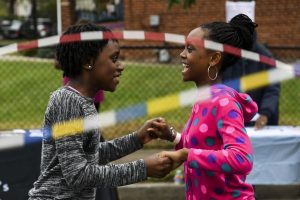
The D.C. Retro Jumpers help Beatrice Barnes, 10, left, and Janiya Barnes, 12, play double Dutch together.
(Carolyn Van Houten/The Washington Post)
But as the sport became “institutionalized,” Gaunt said, it lost its connection to the neighborhood. Casual interest in a game that had evolved organically dwindled as neighborhoods began to gentrify, physical education programs were cut nationwide and social media platforms such as Instagram became ascendant.
Gaunt said she doesn’t see its appeal to a broader audience — including teams in Holland and Japan — as a positive, but evidence of “cultural appropriation.” If double Dutch dies in neighborhoods, she said, that’s bad news for black culture.
“Black girls and double Dutch are like the canary in the coal mine for us,” she said. “You can tell the vibrancy of a community by how vibrant our games are.”
Outside Open Door Baptist in Washington, the ropes kept turning next to the moon bounce and beanbag toss. Ebb and her sister coaxed two girls into the ropes, jumping together, hand in hand, as the ropes turned faster and faster.
“You can double Dutch forever,” Prince said.
The Washington Post
Thursday, August 9, 2007
Black Culture Spans the Centuries in a Single Afternoon
The National Colonial Farm in Accokeek celebrated its annual African American Heritage Day on Saturday.
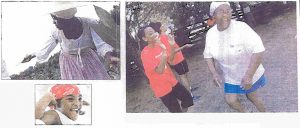
Clockwise from left, Carlina Scott, 9, listens to storyteller Donna Washington; Angelica Jackson, 16, portrays slave Kate Sharper; and Margaret Young joins in double Dutch with Robin Ebb, left, and other D.C. Retro Jumpers.
(Photos by Lois Raimondo/The Washington Post)
The AFRO American Newspapers
Wednesday, July 25, 2007
Flying high!
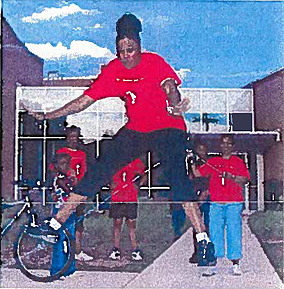
Photo by Danita Delaney |
There’s nothing that says summer in the city like jumping rope. Every summer on the sidewalks of inner city Washington, D.C. you were guaranteed to witness little girls jumping double dutch during any warm day. As the rope hit the pavement, you would hear the chants as the jumper showcased her athleticism and style – flipping into the ropes, jumping on one leg, tricks with another jumper, jumping single rope at the same time – vying to claim the title as the best jumper on the block.
But double dutch isn’t only for children. DC Retro Jumpers, an adult exhibition team, has brought this old pastime into the new millennium, performing at events throughout the city. The DC Retro Jumpers are known for jumping “pop-ups” and “skinin” the rope, and hand dancing while doing double dutch. According to Joy Jones, team leader, jumping double dutch is not only fun but also a great way to be fit. Here, the team practices at the Turkey Thicket Recreation Center, at the corner of 10th Street and Michigan Avenue, N.E.
Special to The Examiner
July 24, 2005
Adults jump at chance to double dutch
Women mix nostalgia with aerobic workout
Adults jump at chance to double dutch
Double-dutch jump roping isn’t just for schoolgirls anymore. Craving a healthy aerobic work-out and a way to travel back in time to their schooldays, some women – many of them professionals in their 30s, 40s and 50s – have found both at the Adult Double Dutch Program at Turkey Thicket Recreation Center.
“When I’m here, I’m 12,” Myra Martin of Southeast said. “Tomorrow I’ll be 50 again, but right now, I’m 12.”
Most of the women who participate in the free program jumped rope as girls and Friday, they remembered the chants popular during childhood (“Charlie Chaplin went to France to teach the girls the hula dance…”), easily jumping to the rhythm of the two turning clothesline ropes.
Getting their jump on
Joy Jones, a native Washingtonian who lives in Northeast and the program’s creator, said it all started last fall a result of “art imitating life imitating art.”
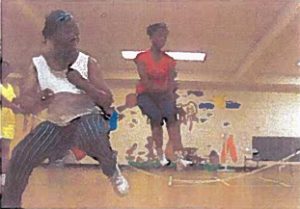
Robbin Ebb, left, of Northeast, and Bettie Robinson-Gibbs, of Southeast, participate in the Adult Double Dutch Program at Lincoln Middle School on Friday in Washington. The free program is offered every Friday at 6:30 p.m. |
“I wanted to jump rope on my lunch breaks at work but the other women said, ‘I’m too fat,’ ‘My back hurts’ or ‘I don’t want people to laugh,’ ” Jones said. “So I wrote a play about women jumping rope [a comedy called “Outdoor Recess,” produced at The Metropolitan Ebony Theatre at Prince George’s Community College in September], and after seeing it, friends said I should start a group in real life.”
During the day, Bettie Robinson-Gibbs, of Southeast, works as an attorney, but on Friday nights, she gets her jump on.
“It’s an excellent, all-over body workout,” she said. “It gets your heart rate up real quick. And jumping rope is also fun.”
When and Where to Double Dutch in D.C.
The Adult Double Dutch Program is sponsored by the District’s Brookland-Edgewood Family Support Collaborative and takes place at Taft School, 1800 Perry St. NE, the temporary home of the Turkey Thicket Recreation Center, at 6:30 p.m. on Fridays. For more information, call 202-832-2368 or e-mail joyjones100@cs.com.
The Washington Post
Thursday, July 28, 2005
Once Child’s Play, Now a Workout
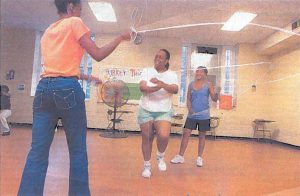
Lorraine Jones jumps as Robin Ebb, left, and Myra Martin turn the ropes in an exercise program at the Turkey Thicket Center in Northeast.